Murun Yang
LRHP: Learning Representations for Human Preferences via Preference Pairs
Oct 06, 2024



Abstract:To improve human-preference alignment training, current research has developed numerous preference datasets consisting of preference pairs labeled as "preferred" or "dispreferred". These preference pairs are typically used to encode human preferences into a single numerical value through reward modeling, which acts as a reward signal during reinforcement learning from human feedback (RLHF). However, representing these human preferences as a numerical value complicates the analysis of these preferences and restricts their broader applications other than RLHF. In contrast, in this work, we introduce a preference representation learning task that aims to construct a richer and more structured representation of human preferences. We further develop a more generalizable framework, Learning Representations for Human Preferences via preference pairs (namely LRHP), which extends beyond traditional reward modeling to tackle this task. We verify the utility of preference representations in two downstream tasks: preference data selection and preference margin prediction. Building upon the human preferences in representations, we achieve strong performance in both tasks, significantly outperforming baselines.
RoVRM: A Robust Visual Reward Model Optimized via Auxiliary Textual Preference Data
Aug 22, 2024



Abstract:Large vision-language models (LVLMs) often fail to align with human preferences, leading to issues like generating misleading content without proper visual context (also known as hallucination). A promising solution to this problem is using human-preference alignment techniques, such as best-of-n sampling and reinforcement learning. However, these techniques face the difficulty arising from the scarcity of visual preference data, which is required to train a visual reward model (VRM). In this work, we continue the line of research. We present a Robust Visual Reward Model (RoVRM) which improves human-preference alignment for LVLMs. RoVRM leverages auxiliary textual preference data through a three-phase progressive training and optimal transport-based preference data selection to effectively mitigate the scarcity of visual preference data. We experiment with RoVRM on the commonly used vision-language tasks based on the LLaVA-1.5-7B and -13B models. Experimental results demonstrate that RoVRM consistently outperforms traditional VRMs. Furthermore, our three-phase progressive training and preference data selection approaches can yield consistent performance gains over ranking-based alignment techniques, such as direct preference optimization.
Cross-layer Attention Sharing for Large Language Models
Aug 04, 2024
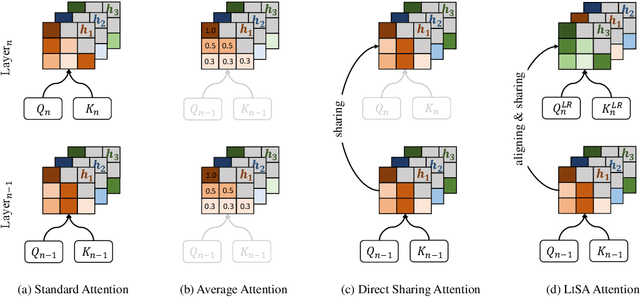
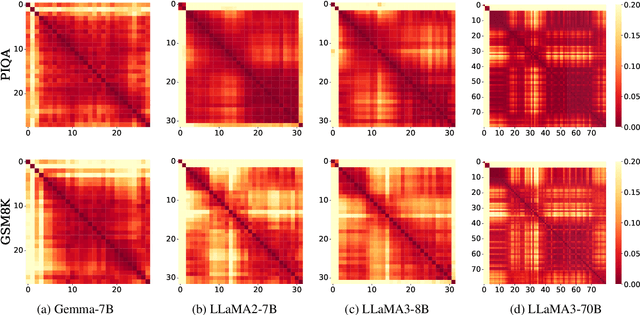
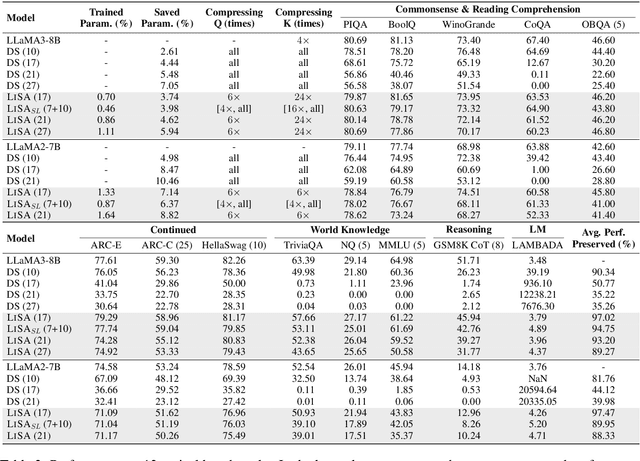
Abstract:As large language models (LLMs) evolve, the increase in model depth and parameter number leads to substantial redundancy. To enhance the efficiency of the attention mechanism, previous works primarily compress the KV cache or group attention heads, while largely overlooking redundancy between layers. Our comprehensive analyses across various LLMs show that highly similar attention patterns persist within most layers. It's intuitive to save the computation by sharing attention weights across layers. However, further analysis reveals two challenges: (1) Directly sharing the weight matrix without carefully rearranging the attention heads proves to be ineffective; (2) Shallow layers are vulnerable to small deviations in attention weights. Driven by these insights, we introduce LiSA, a lightweight substitute for self-attention in well-trained LLMs. LiSA employs tiny feed-forward networks to align attention heads between adjacent layers and low-rank matrices to approximate differences in layer-wise attention weights. Evaluations encompassing 13 typical benchmarks demonstrate that LiSA maintains high response quality in terms of accuracy and perplexity while reducing redundant attention calculations within 53-84% of the total layers. Our implementations of LiSA achieve a 6X compression of Q and K, with maximum throughput improvements of 19.5% for LLaMA3-8B and 32.3% for LLaMA2-7B.
CTC-based Non-autoregressive Speech Translation
May 27, 2023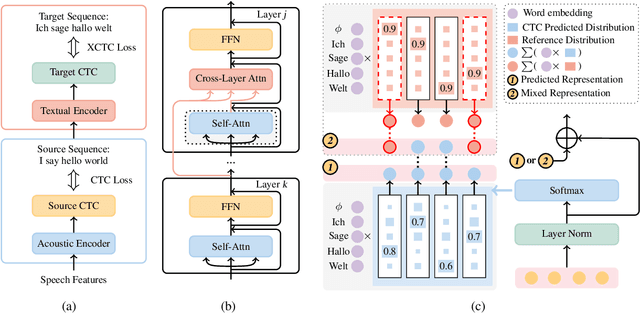
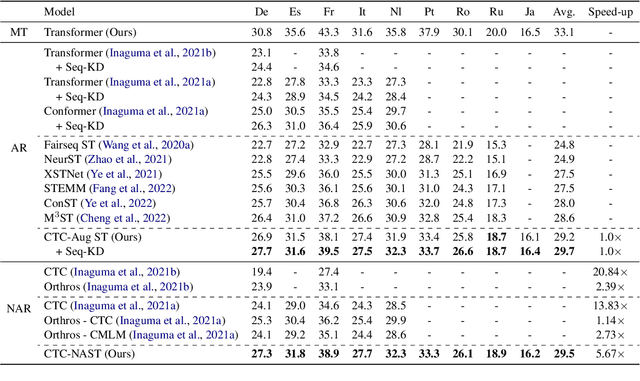
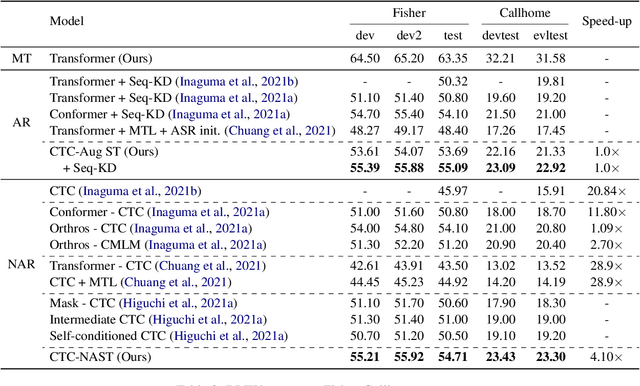
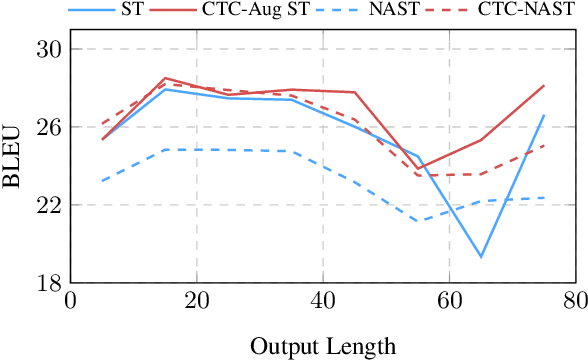
Abstract:Combining end-to-end speech translation (ST) and non-autoregressive (NAR) generation is promising in language and speech processing for their advantages of less error propagation and low latency. In this paper, we investigate the potential of connectionist temporal classification (CTC) for non-autoregressive speech translation (NAST). In particular, we develop a model consisting of two encoders that are guided by CTC to predict the source and target texts, respectively. Introducing CTC into NAST on both language sides has obvious challenges: 1) the conditional independent generation somewhat breaks the interdependency among tokens, and 2) the monotonic alignment assumption in standard CTC does not hold in translation tasks. In response, we develop a prediction-aware encoding approach and a cross-layer attention approach to address these issues. We also use curriculum learning to improve convergence of training. Experiments on the MuST-C ST benchmarks show that our NAST model achieves an average BLEU score of 29.5 with a speed-up of 5.67$\times$, which is comparable to the autoregressive counterpart and even outperforms the previous best result of 0.9 BLEU points.
 Add to Chrome
Add to Chrome Add to Firefox
Add to Firefox Add to Edge
Add to Edge